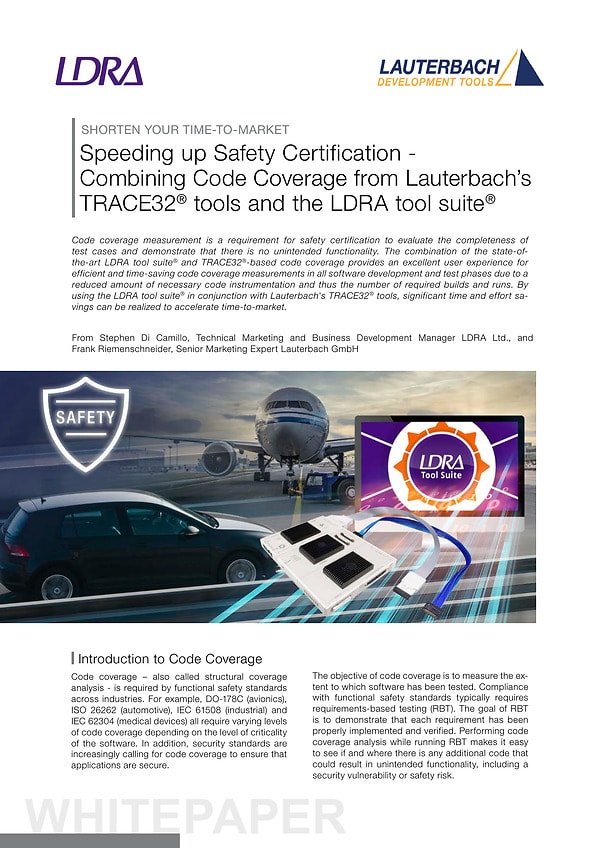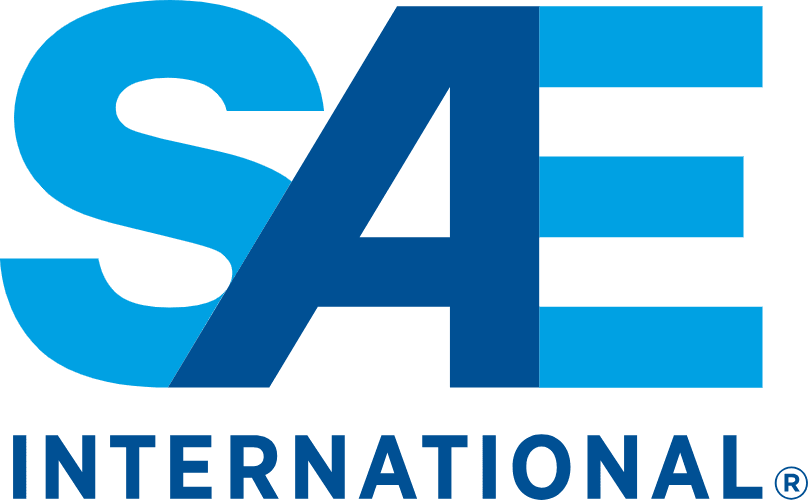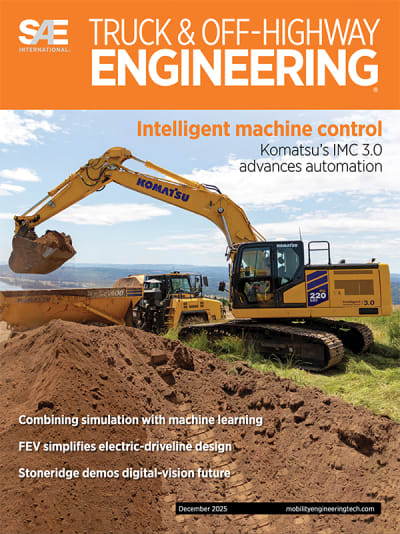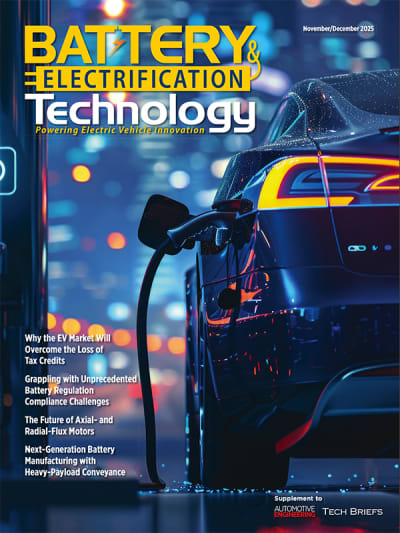
White PaperSoftware
Speeding up Safety Certification - Combining Code Coverage from Lauterbach’s TRACE32® tools and the LDRA tool suite®
SPONSORED BY: ![]()
Code coverage measurement is essential for safety certification to ensure test completeness and detect unintended functionality. Combining the LDRA tool suite® with Lauterbach’s TRACE32® tools enables efficient, time-saving code coverage across all development phases by minimizing code instrumentation and reducing required builds and runs. This integration streamlines testing, saving time and effort, and helps accelerate time-to-market.
Don't have an account?
Overview
The whitepaper titled "Speeding up Safety Certification - Combining Code Coverage from Lauterbach’s TRACE32® tools and the LDRA tool suite®" discusses the importance of code coverage measurement in achieving safety certification across various industries, including avionics, automotive, industrial, and medical devices. Code coverage, also known as structural coverage analysis, is essential for evaluating the completeness of test cases and ensuring that there is no unintended functionality in software.
The document emphasizes that compliance with functional safety standards, such as DO-178C, ISO 26262, IEC 61508, and IEC 62304, requires varying levels of code coverage based on the criticality of the software. The goal of requirements-based testing (RBT) is to demonstrate that each requirement has been properly implemented and verified, with code coverage analysis helping to identify any additional code that could introduce security vulnerabilities or safety risks.
The combination of the LDRA tool suite® and Lauterbach's TRACE32® tools offers a streamlined approach to code coverage measurement. The LDRA tool suite provides lightweight instrumentation suitable for various types of code coverage, while TRACE32® enables non-intrusive measurements, minimizing the need for code instrumentation and thus reducing the number of required builds and runs. This integration leads to significant time and effort savings, accelerating the time-to-market for software products.
The whitepaper also outlines the different types of code coverage, including statement coverage, branch coverage, and multiple condition/decision coverage (MC/DC), as well as other forms like Data and Control Coupling Coverage (DCCC) and function coverage. It highlights the ability to generate detailed coverage reports, which serve as important certification artifacts, and discusses the process of creating and executing additional test cases to improve coverage metrics.
Overall, the document presents a compelling case for using the combined capabilities of the LDRA tool suite® and TRACE32® to enhance code coverage analysis and facilitate compliance with safety certification requirements.





